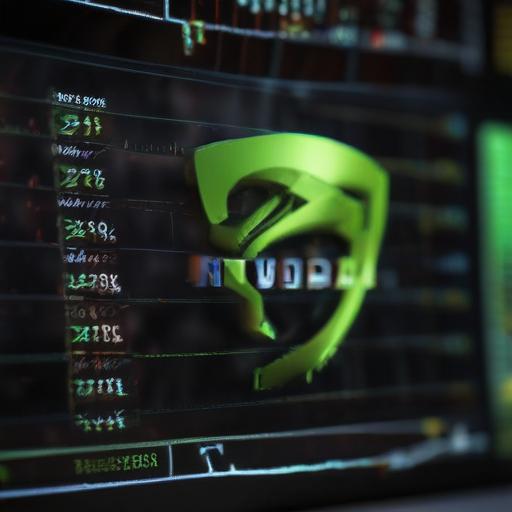Atria Investments trims NVIDIA stake as hedge funds adjust portfolios and insiders tighten positions
Atria Investments Inc reduced its stake in NVIDIA Corporation by 3.1% in the first quarter, reporting ownership of 912,729 shares after selling 29,473 shares. The position, which accounts for about 1.3% of Atria’s portfolio and ranks as its 4th largest, was worth roughly $98.9 million at the time of the latest SEC filing.
NVIDIA’s footprint among other institutional investors also shifted modestly during the quarter. Astoria Portfolio Advisors LLC increased its stake by 0.9% to 93,568 shares, valued at about $9.61 million. Centerpoint Advisory Group raised its holding by 2.5% to 39,398 shares, worth around $4.27 million. GSB Wealth Management LLC added 3.3% to own 32,611 shares (about $3.53 million). Variant Private Wealth LLC expanded its position by 20.6% to 18,800 shares, about $2.04 million. Financial Perspectives Inc lifted its NVIDIA stake by 2.8% to 45,958 shares, valued at roughly $4.98 million. Taken together, institutional investors and hedge funds own about 65.27% of NVIDIA’s stock.
Analysts’ view on NVIDIA remains broadly constructive, even as clouds of volatility in AI-related demand linger. KeyCorp raised its price target from 190 to 215 and continued to view the stock as overweight. Benchmark reiterated a buy rating with a target of 190. Seaport Res Ptn downgraded to a strong sell in a report, while Wedbush lifted its price objective from 175 to 210 and maintained an outperform rating. Raymond James also increased its price objective from 150 to 165 and gave a strong-buy rating. Overall, market consensus tracked by MarketBeat placed NVIDIA at a Moderate Buy, with a median target of about 194.31.
NVIDIA’s latest market action reflected a mix of performance indicators. Shares traded around $181.77 intraday, with heavy trading volume. The company boasted a market capitalization near $4.44 trillion, a price-to-earnings ratio of roughly 58.6, a price-to-earnings-growth ratio of 1.57, and a beta of about 2.14. The stock has traded in a wide range over the past year, from a 12-month low near 86.62 to a high around 184.48, underscoring the volatility tied to AI-driven demand and broader tech cycles. NVIDIA’s most recent quarterly results showed revenue of $44.06 billion, topping a consensus call of $43.09 billion, but earnings per share of $0.81 fell short of the expected $0.87. The company reported a return on equity well above 100% and a net margin in the mid-50s, reflecting its strong margin profile even as earnings growth faced quarterly headwinds. The company also reaffirmed a quarterly dividend of $0.01 per share, paid July 3 to shareholders of record as of June 11, yielding a negligible rate against the price level, with a payout ratio around 1.29%.
Insider activity added another layer of headline attention. Director Mark A. Stevens sold 935,000 NVIDIA shares on June 3 at an average price of about $140.92, reducing his stake by roughly 9.21%. He still owned about 9.21% of the company’s outstanding stock post-sale, valued at over $1.3 billion. Another director, Tench Coxe, sold 1,000,000 shares on June 9 at an average price of $142.80, leaving him with a stake valued at billions of dollars. Collectively, insiders sold about 5.9 million NVIDIA shares in the last quarter, totaling roughly $903 million, and insiders still own about 4.17% of the company.
What this means for investors
– NVIDIA remains a cornerstone of many growth-focused portfolios, with a dominant position in high-performance computing and AI acceleration. The stock’s elevated valuation reflects strong demand and strategic importance, even as earnings prints show quarterly variability.
– The mix of modest hedge fund activity—mostly increases in several smaller positions alongside a reduction at a larger fund—suggests ongoing rebalancing rather than a wholesale shift in conviction about NVIDIA’s long-term trajectory.
– Insider selling in large blocks has historically drawn attention when it involves top executives and directors. While not uncommon around big shifts or liquidity events, it may be viewed by some investors as a reason to monitor for future implications on corporate strategy or capital allocation.
Readers should weigh NVIDIA’s robust revenue growth and leadership in AI hardware against the current earnings miss and the broader market’s sensitivity to high-valuation tech names. The coming quarters could shed more light on how AI demand, supply chain dynamics, and competitive pressure influence NVIDIA’s growth path and profitability.
Summary
– Atria Investments trims its NVIDIA stake in Q1; NVIDIA remains a key but growing portion of its portfolio.
– Several hedge funds added to or modestly increased NVIDIA holdings; institutional ownership remains high.
– NVIDIA reported revenue that beat expectations but an EPS miss; a dividend was declared, with a very modest yield.
– Large insider sales occurred in early June, signaling liquidity moves by top executives.
– Analysts maintain a generally positive view, with a wide range of price targets and ratings. A cautious but optimistic outlook continues to frame NVIDIA’s AI-driven growth story.
